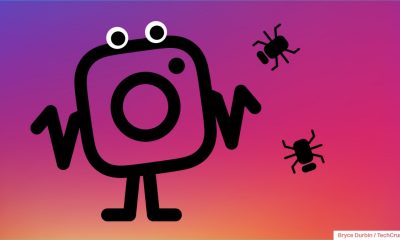Entertainment
‘Super Mario Bros. Wonder’ review
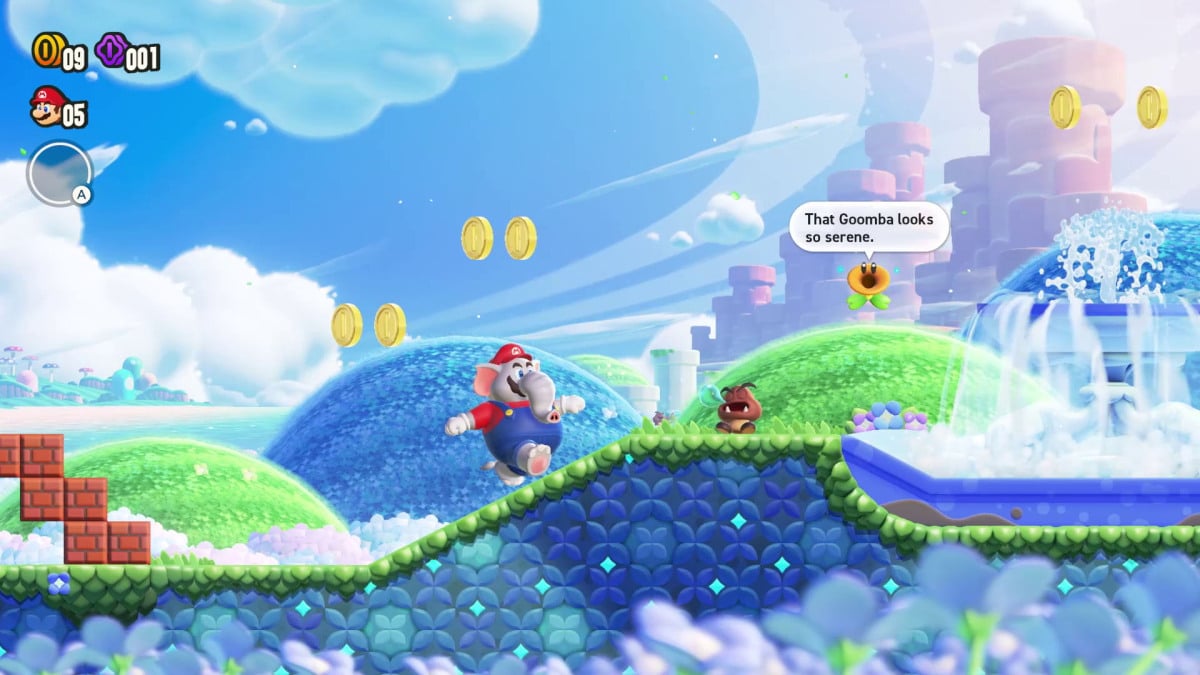
As the Nintendo Switch enters its twilight era, with another console potentially set to launch in 2024, Mario is just the guy to bring a little bit of juice to the system in its final days.
Super Mario Bros. Wonder, launching exclusively on Switch on Oct. 20, has a lot of weight to carry. It’s the last big original Switch game of 2023 (the Super Mario RPG remake looks great, but that’s not new) and the first new side-scrolling Mario game in a decade. Crucially, it’s also the first good side-scrolling Mario game in a lot longer than a decade, given that the New Super Mario Bros. series quickly petered out quality-wise after its debut in 2006.
With varied world maps full of secrets to uncover, absurdly clever level design, and a real sense of surprise and – well – wonder for the first time in ages, Super Mario Bros. Wonder is more than capable of carrying the Switch to the end of the road.
Mario gets funky
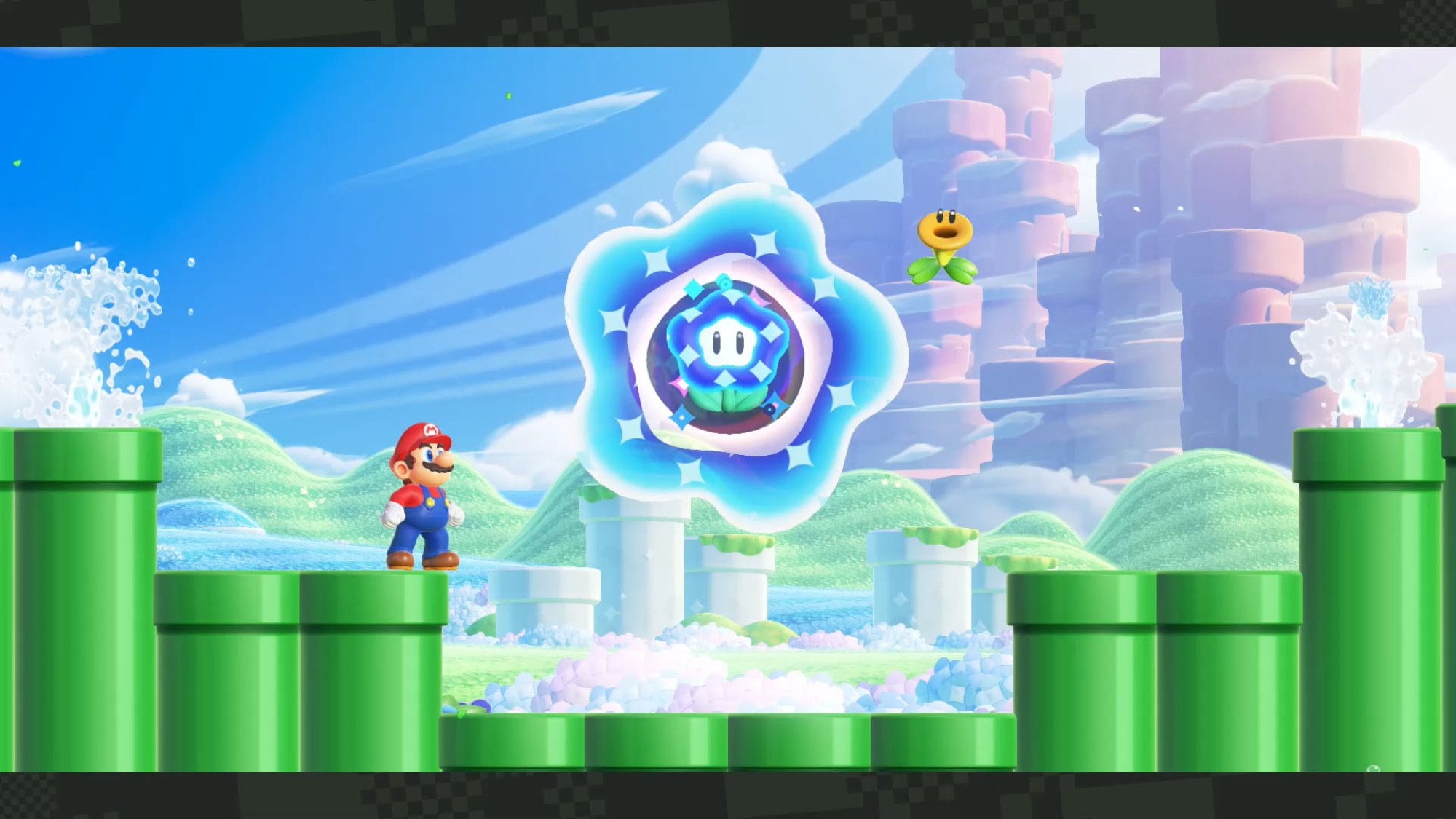
Wonder Flowers are so cool.
Credit: Nintendo
Mario games are not often narrative epics in any sense of the term – and that holds true here. You get a flashy opening cutscene introducing the new Flower Kingdom and not much else before the game sets you on your way to save everyone, once again, by jumping on turtles.
That description, however, doesn’t quite do the game’s opening justice. The Flower Kingdom is full of Wonder Flowers that, put simply, make weird things happen whenever you get one. Wonder begins with Bowser snatching one, becoming a horrifying living castle with a giant Bowser face on it, and sets off to do bad guy stuff. It’s very silly and an appropriately delightful intro to the game to come.
What follows is fairly typical of 2D Mario games. You’ll navigate a series of world maps full of levels to complete, each containing at least two Wonder Seeds to collect. One is almost always at the end of the level, while the other requires you to find a Wonder Flower and survive whatever bonkers challenge it triggers to reap your reward.
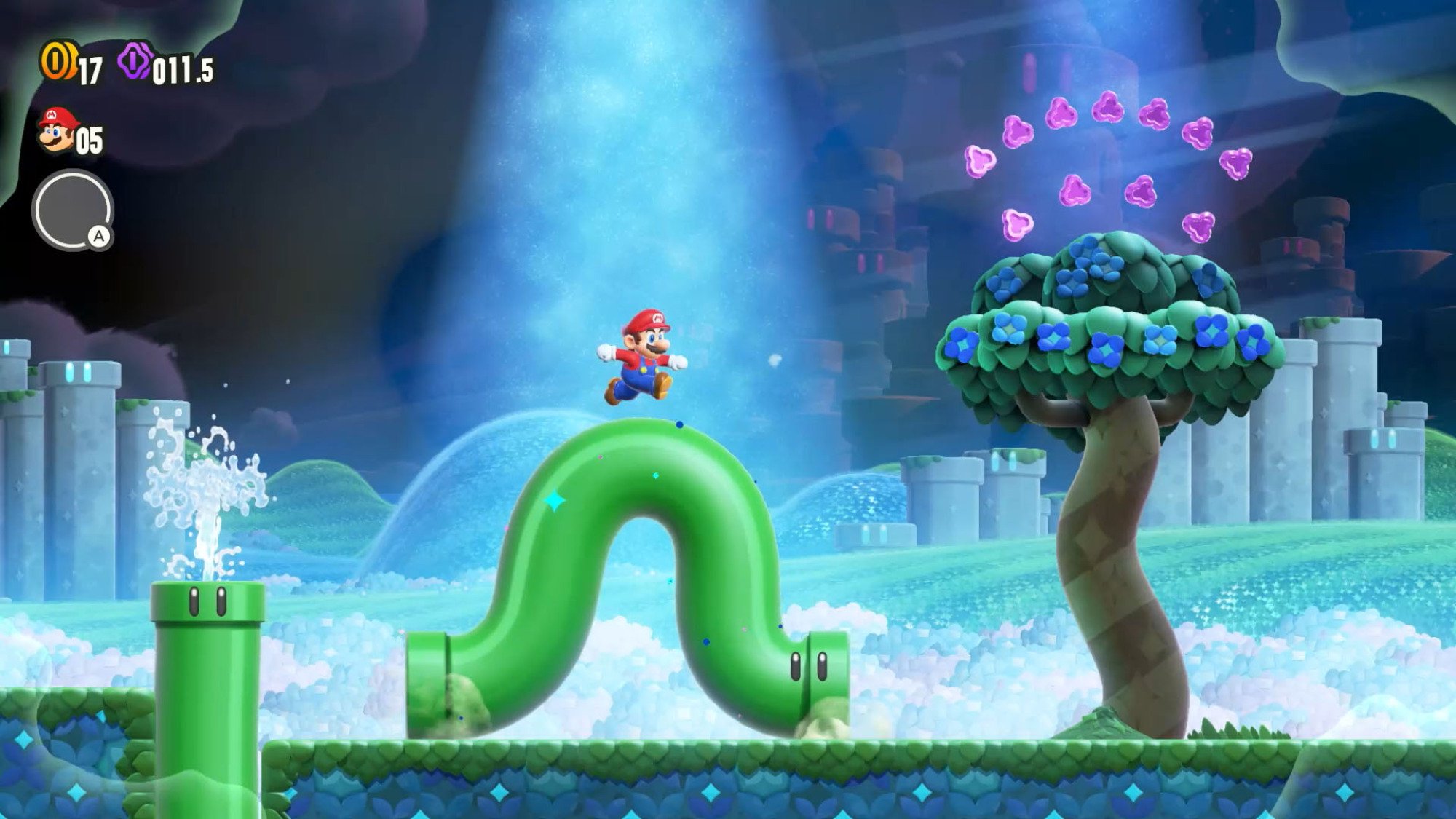
Things get weird quickly.
Credit: Nintendo
Progress is gated by the total number of Wonder Seeds you collect in each world, but there are enough levels scattered around the place that you don’t need to be a completionist just to see the end of the game. There are also plenty of hidden paths, and even full-on secret levels, to find if you’re observant enough.
I’d be remiss not to mention the game’s other major system, which comes in the form of badges that Mario can collect and equip one at a time. These can do a lot of different things, from giving Mario new abilities to triggering helpful passive effects. One badge gives Mario a Mega Man X-style vertical wall jump, while another provides a grappling hook you can use to zip from one vertical surface to another.
These are almost all fun, helpful, and most importantly, hardly ever required to do anything. You can’t really screw yourself by going into a stage with the wrong badge equipped, and even if you somehow do, you can always switch them out during the loading screen after you die.
Surprise!
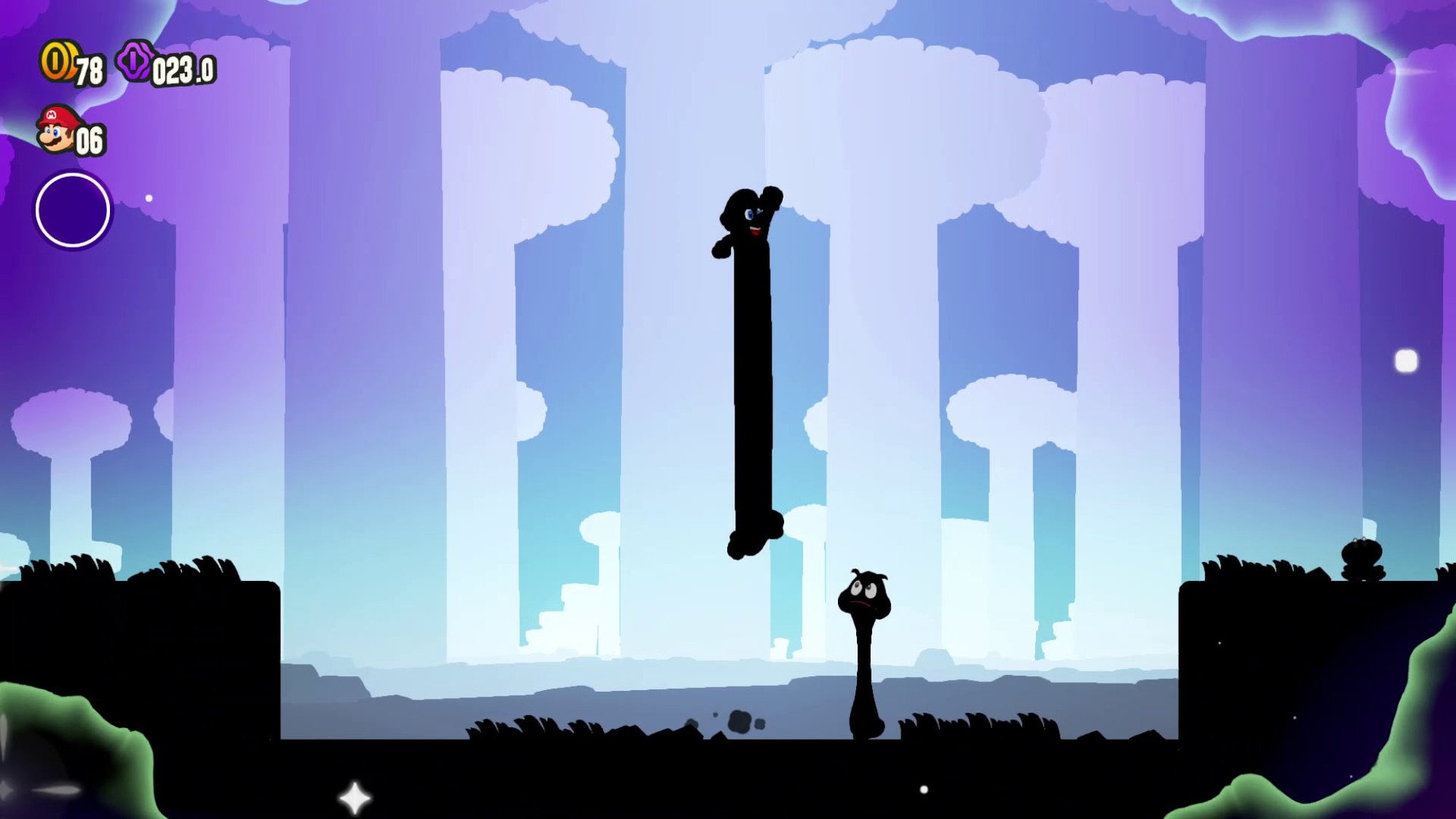
No, seriously, things get WEIRD.
Credit: Nintendo
The basic structure of Wonder is familiar enough to anyone with passing knowledge of 2D Mario games, but where this game really shines is in its capacity to surprise.
Before we get to that, though, one thing that’s definitely not surprising is how good it feels in the hands. Controlling Mario (or any of the game’s other playable characters, including Luigi, Peach, Daisy, and a bunch of Toads) is just innately satisfying to do. His moveset this time around is fairly reminiscent of the New Super Mario Bros. games, with a spin jump and a wall jump. One major difference is the lack of a triple jump, but I didn’t really miss that.
It’s so easy to get into a flow state with Wonder, where you’re sight-reading levels on your first try and zooming past challenges with delicious ease. It’s up there with the classic Mario titles of yesteryear in this regard.
Where Wonder stands on its own, though, is when Wonder Flowers come into play. Every level has one, and put simply, you never have any idea what’s going to happen when you touch it. Enemy behavior can radically change, as can the very nature of how Mario moves through the environment, or even what Mario is. It’s not random, though; every Wonder Flower effect is extremely thoughtful and fully in line with the theme of each level. Hardly any of them repeat, and absolutely none of them are bad.
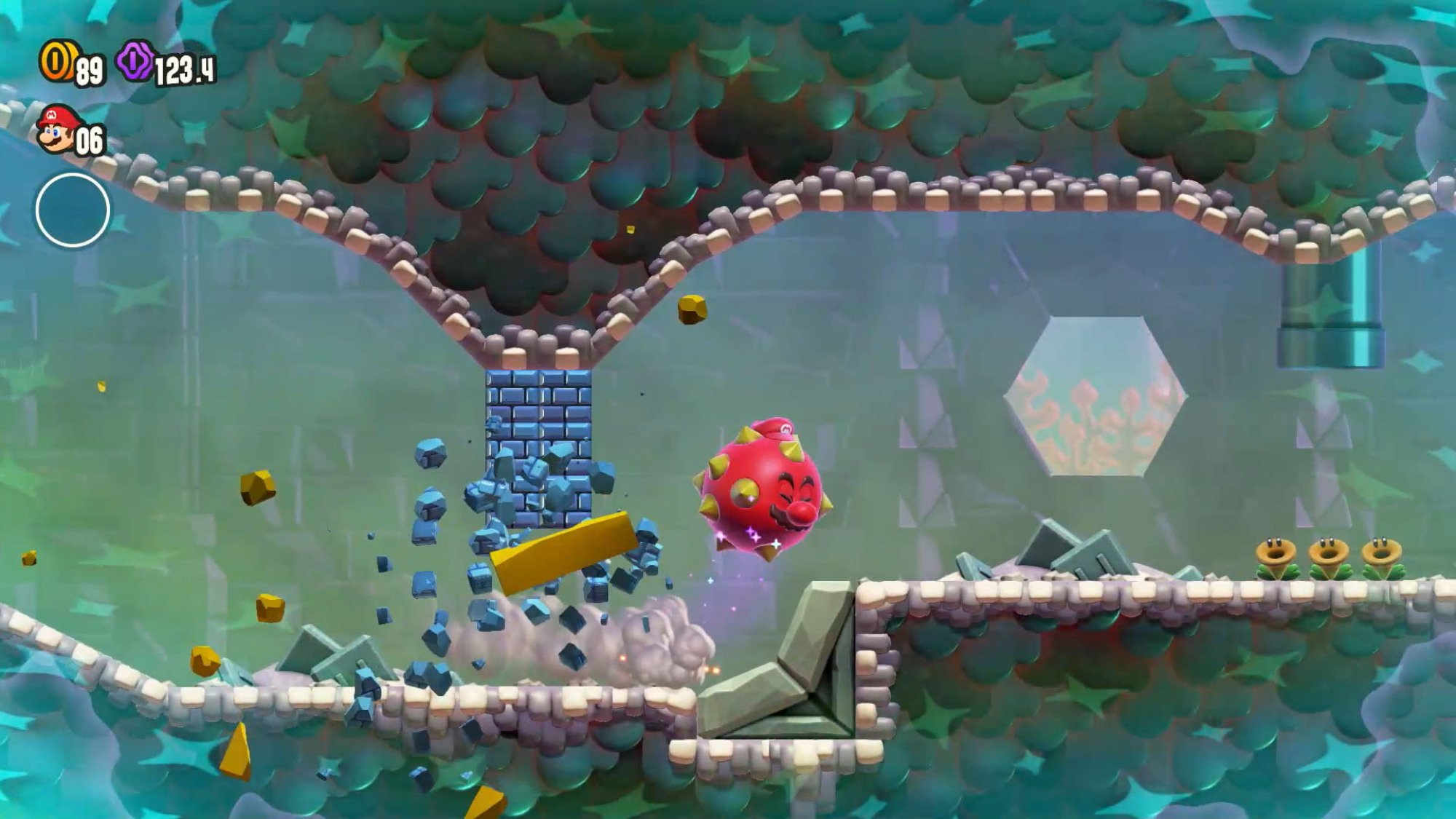
Do you believe me now?
Credit: Nintendo
It’s a real shot in the arm for 2D Mario games, which suffered a very real decline in quality from 2006 onwards. The New Super Mario Bros. games were marked by uninteresting concepts and boring aesthetics; two things you cannot accuse Wonder of having. Of course, there are a handful of new power-ups, including a mushroom that turns Mario into an elephant with the ability to break blocks and water plants with his trunk. I will say that the Bubble Flower power-up (which lets Mario shoot out bubbles that he can jump off of) is woefully underutilized, never really feeling essential throughout the game.
Its visual style really pops on a nice TV, as Mario and co. are full of little animation flourishes that add a lot of personality to otherwise basic 3D models. Mario’s legs look like a cartoon when he runs fast and he has to grab his hat out of mid-air every time he goes into a pipe. There’s even a goofy little drumroll sound effect every time you butt-stomp. It’s a real wonder to look at and listen to.
Of course, it’s not without some warts here and there. Some of the level backgrounds are a little basic, and while the soundtrack is eminently hummable, I wouldn’t put it anywhere near the musical achievement that was Super Mario Odyssey. In keeping with other recent Mario games, Wonder also isn’t particularly lengthy. It took me maybe 8 hours to see the end credits, and I don’t think going for 100 percent completion would stretch that beyond 15 to 20 hours or so.
I’m perfectly happy to spend $60 on a fantastic 8 to 10 hour experience, but you may not be. Oh, and one more quick side note: Super Mario Bros. Wonder supports up to four-player co-op play either locally or online for every level. You can also help out strangers by leaving goodies around levels, which is cool. Unfortunately, I couldn’t test any of this before launch, but during a preview earlier this year, I thought it was all very sick.
Rejuvenating a classic
Even with a couple of minor hindrances to the experience, Super Mario Bros. Wonder is a fountain of youth for one of gaming’s oldest active heroes, in the two-dimensional format that originally birthed him. After the existentially dreadful Mario movie earlier this year, it’s great to be reminded that Mario is actually joyously wonderful when done right.
This didn’t come a moment too soon, either. The Switch has delivered a bountiful amount of excellent gaming experiences over the last seven and a half years, but its time is coming to a close. I’ll admit that I’ve been on the “please release a new console” train for a year or two now, but between Tears of the Kingdom and Super Mario Bros. Wonder, there’s still a little magic left in the tank.
Topics
Nintendo
Nintendo Switch
-

 Business6 days ago
Business6 days agoIndia-Pakistan cricket match helps Disney’s Hotstar set global streaming record
-
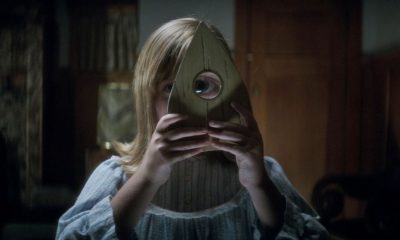
 Entertainment7 days ago
Entertainment7 days ago‘Ouija: Origin of Evil’ Easter egg spotted in Mike Flanagan’s ‘The Fall of the House of Usher’
-

 Business6 days ago
Business6 days agoThe SBF trial continues, Atlassian acquires Loom, and OpenAI explores making its own chips
-

 Entertainment6 days ago
Entertainment6 days agoChatting with Meta’s dystopian AI personas leaves more questions than answers
-

 Entertainment6 days ago
Entertainment6 days agoThese tiny ‘Fall of the House of Usher’ clues give away how each of the children die
-

 Entertainment6 days ago
Entertainment6 days ago‘The Fall of the House of Usher’: The most WTF moments
-

 Business6 days ago
Business6 days agoBlue checks aren’t protecting sex workers from X’s porn crackdown
-

 Business7 days ago
Business7 days agoTikTok scores sizable Disney deal including a content hub and publisher partnership



